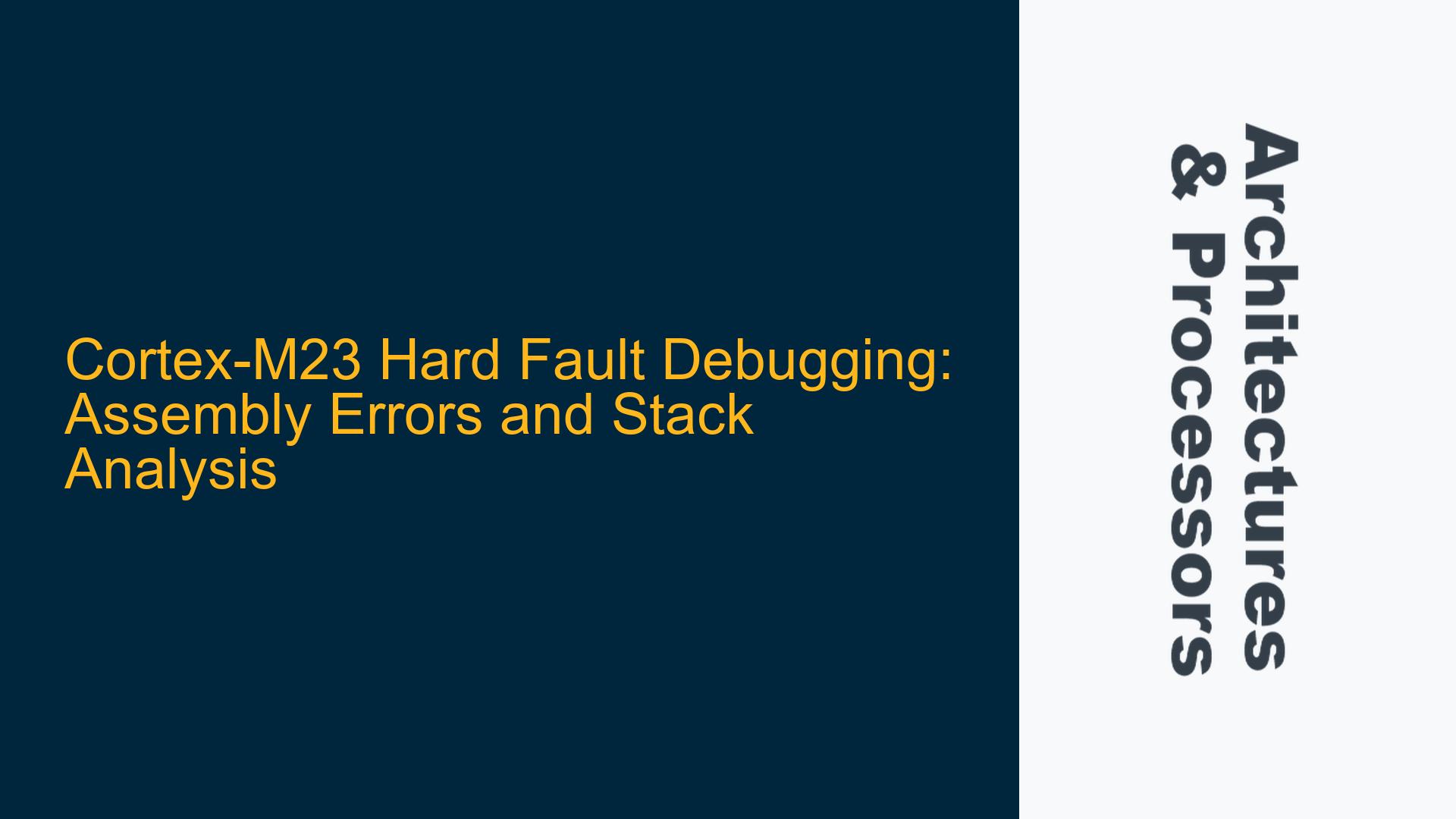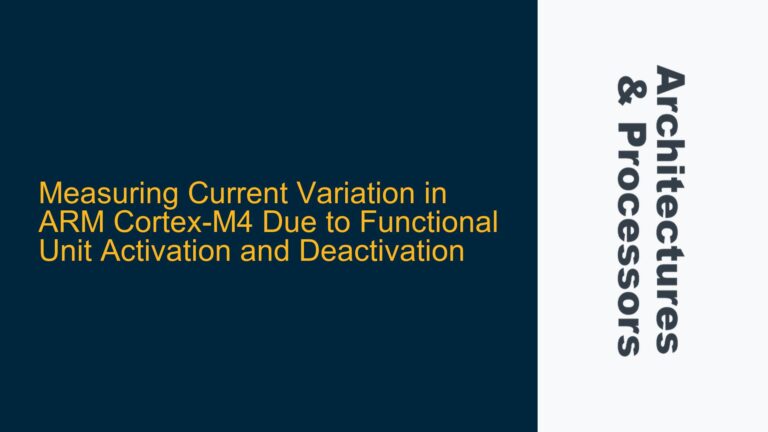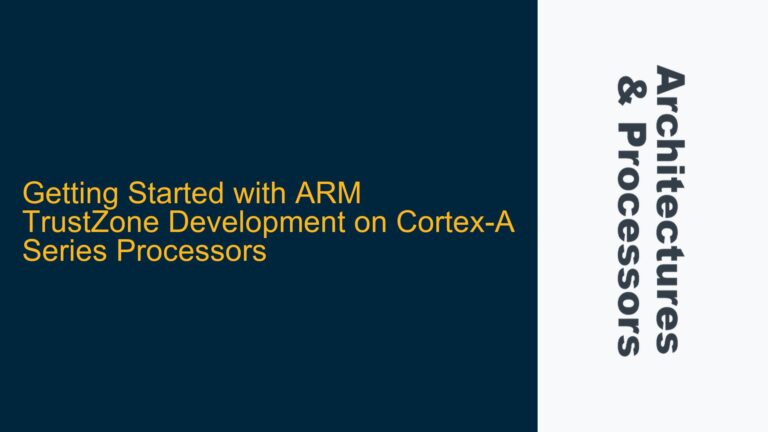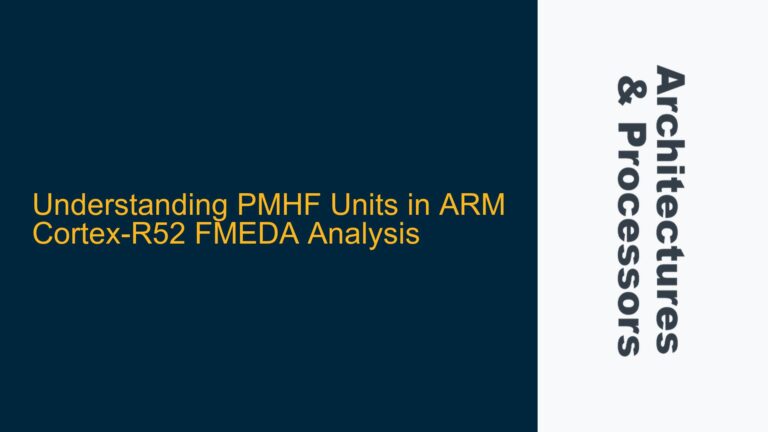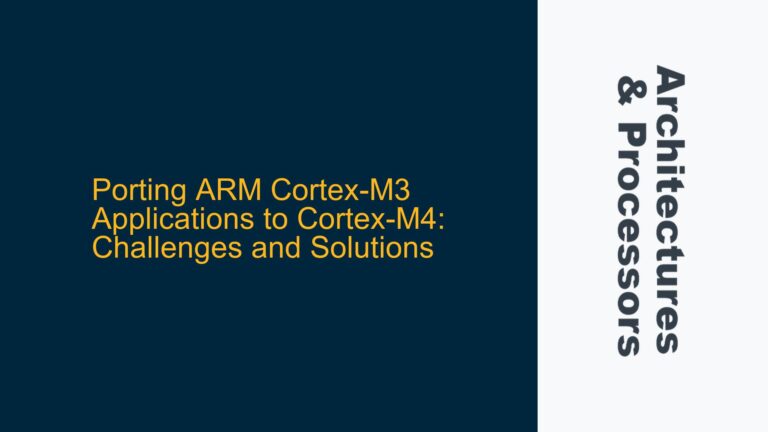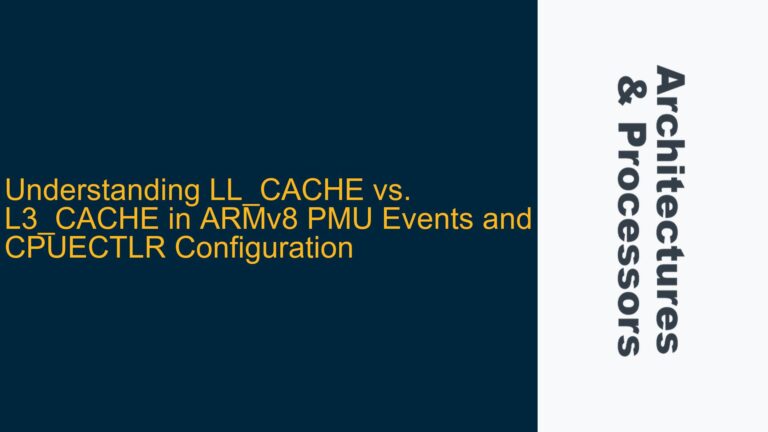Cortex-M23 Hard Fault Handler Assembly Code Errors
The core issue revolves around debugging a Hard Fault on the Cortex-M23 processor using a custom Hard Fault handler written in inline assembly. The handler is designed to extract register values from the stack to diagnose the cause of the fault. However, the assembly code fails to compile due to several errors related to the Cortex-M23’s Thumb instruction set and its limitations. The errors include unsupported instructions, invalid offsets, and alignment issues. These errors stem from assumptions about the Cortex-M23’s instruction set that are not valid for this specific ARMv8-M architecture.
The Cortex-M23 is based on the ARMv8-M baseline architecture, which has a reduced instruction set compared to ARMv7-M or ARMv6-M architectures. This means certain instructions, such as conditional execution in Thumb mode, are not supported. Additionally, the Cortex-M23’s stack frame layout and alignment requirements differ from other Cortex-M processors, which can lead to invalid memory access patterns if not handled correctly.
The errors observed during compilation are:
- Unshifted register required: The
tst lr, #4instruction is invalid because the Cortex-M23 requires unshifted registers for certain operations. - Unsupported
ite eqin Thumb mode: Theite(If-Then-Else) instruction is not supported in the Cortex-M23’s Thumb instruction set. - Thumb does not support conditional execution: The Cortex-M23 does not support conditional execution of instructions, which is a feature available in ARMv7-M and later architectures.
- Invalid offset, target not word-aligned: The memory access pattern in the assembly code assumes a specific stack frame alignment that is not valid for the Cortex-M23.
- Invalid offset, value too big: The offset used in the
ldrinstruction exceeds the allowable range for the Cortex-M23’s memory access instructions.
These errors highlight the need to adapt the Hard Fault handler to the Cortex-M23’s specific architectural constraints.
Cortex-M23 Instruction Set Limitations and Stack Frame Misalignment
The root causes of the compilation errors can be traced to two primary factors: the Cortex-M23’s limited instruction set and incorrect assumptions about the stack frame layout. The Cortex-M23 implements the ARMv8-M baseline architecture, which is optimized for ultra-low-power applications and has a reduced feature set compared to the ARMv8-M mainline architecture used in processors like the Cortex-M33.
Instruction Set Limitations
The Cortex-M23’s Thumb instruction set lacks support for certain features that are commonly used in Hard Fault handlers for other Cortex-M processors. For example:
- Conditional Execution: The
iteinstruction and conditional execution of instructions are not supported. This is a significant limitation because conditional execution is often used in fault handlers to handle different stack frame layouts based on the processor mode (MSP or PSP). - Limited Addressing Modes: The Cortex-M23 has stricter requirements for memory access instructions, such as
ldrandstr. Offsets must be within a specific range, and memory accesses must be word-aligned. The original code assumes a more flexible addressing mode, which is not supported.
Stack Frame Misalignment
The Cortex-M23’s stack frame layout differs from other Cortex-M processors due to its ARMv8-M baseline architecture. When a Hard Fault occurs, the processor pushes a set of registers onto the stack. The layout of these registers is critical for the Hard Fault handler to correctly extract and interpret the fault context. The original code assumes a stack frame layout that is not valid for the Cortex-M23, leading to invalid memory access patterns.
The Cortex-M23’s stack frame during a Hard Fault includes the following registers in order:
- Program Counter (PC)
- Program Status Register (PSR)
- Link Register (LR)
- General-Purpose Registers (R0-R3, R12)
The original code attempts to access these registers using fixed offsets, but the offsets are incorrect due to differences in the stack frame layout. Additionally, the code does not account for the Cortex-M23’s alignment requirements, leading to errors during compilation.
Adapting the Hard Fault Handler for Cortex-M23
To resolve the compilation errors and ensure the Hard Fault handler works correctly on the Cortex-M23, the following steps must be taken:
Step 1: Replace Unsupported Instructions
The ite instruction and conditional execution must be replaced with equivalent logic using branch instructions. For example, the following code can be used to determine whether the MSP or PSP was in use at the time of the fault:
__asm volatile
(
" tst lr, #4 \n"
" beq use_msp \n"
" b use_psp \n"
" use_msp: \n"
" mrs r0, msp \n"
" b continue \n"
" use_psp: \n"
" mrs r0, psp \n"
" continue: \n"
" ldr r1, [r0, #24] \n"
" ldr r2, handler2_address_const \n"
" bx r2 \n"
" handler2_address_const: .word prvGetRegistersFromStack \n"
);
This code uses branch instructions (beq and b) to replace the unsupported ite instruction.
Step 2: Correct Stack Frame Offsets
The stack frame offsets must be adjusted to match the Cortex-M23’s stack frame layout. The following table shows the correct offsets for each register:
| Register | Offset |
|---|---|
| R0 | 0 |
| R1 | 4 |
| R2 | 8 |
| R3 | 12 |
| R12 | 16 |
| LR | 20 |
| PC | 24 |
| PSR | 28 |
The prvGetRegistersFromStack function must be updated to use these offsets:
void prvGetRegistersFromStack(uint32_t *pulFaultStackAddress)
{
volatile uint32_t r0;
volatile uint32_t r1;
volatile uint32_t r2;
volatile uint32_t r3;
volatile uint32_t r12;
volatile uint32_t lr;
volatile uint32_t pc;
volatile uint32_t psr;
r0 = pulFaultStackAddress[0];
r1 = pulFaultStackAddress[1];
r2 = pulFaultStackAddress[2];
r3 = pulFaultStackAddress[3];
r12 = pulFaultStackAddress[4];
lr = pulFaultStackAddress[5];
pc = pulFaultStackAddress[6];
psr = pulFaultStackAddress[7];
for(;;);
}
Step 3: Ensure Word-Aligned Memory Access
The Cortex-M23 requires word-aligned memory access for ldr and str instructions. The original code uses an invalid offset that is not word-aligned. To fix this, ensure that all memory accesses use offsets that are multiples of 4. For example:
" ldr r1, [r0, #24] \n" // Correct offset for PC (24 is a multiple of 4)
Step 4: Validate the Hard Fault Handler
After making the necessary changes, validate the Hard Fault handler by intentionally triggering a fault (e.g., by accessing an invalid memory address) and verifying that the handler correctly extracts the register values from the stack. Use a debugger to inspect the values of r0, r1, r2, r3, r12, lr, pc, and psr to ensure they match the expected values.
By following these steps, the Hard Fault handler can be adapted to work correctly on the Cortex-M23, enabling effective debugging of Hard Faults in embedded applications.
